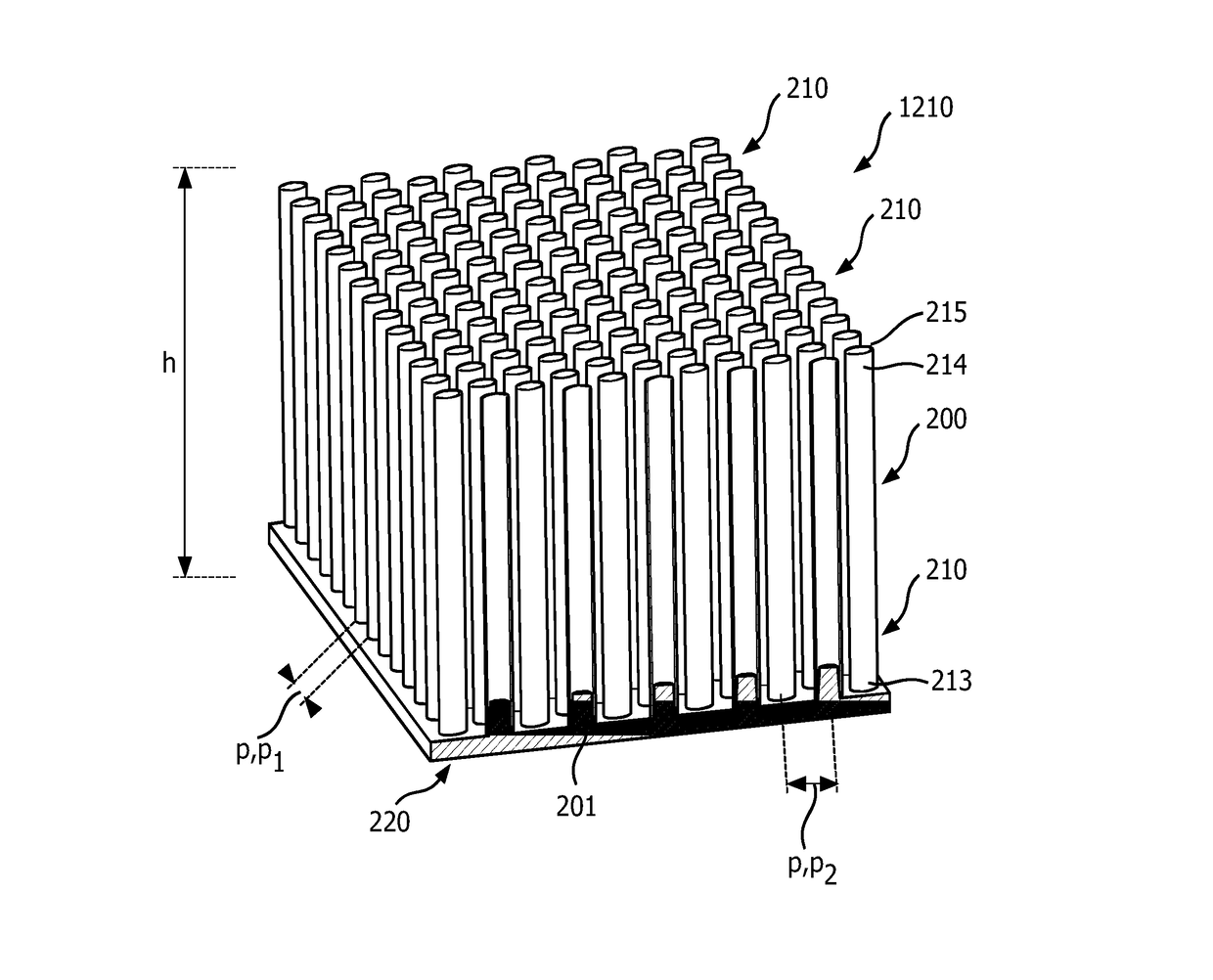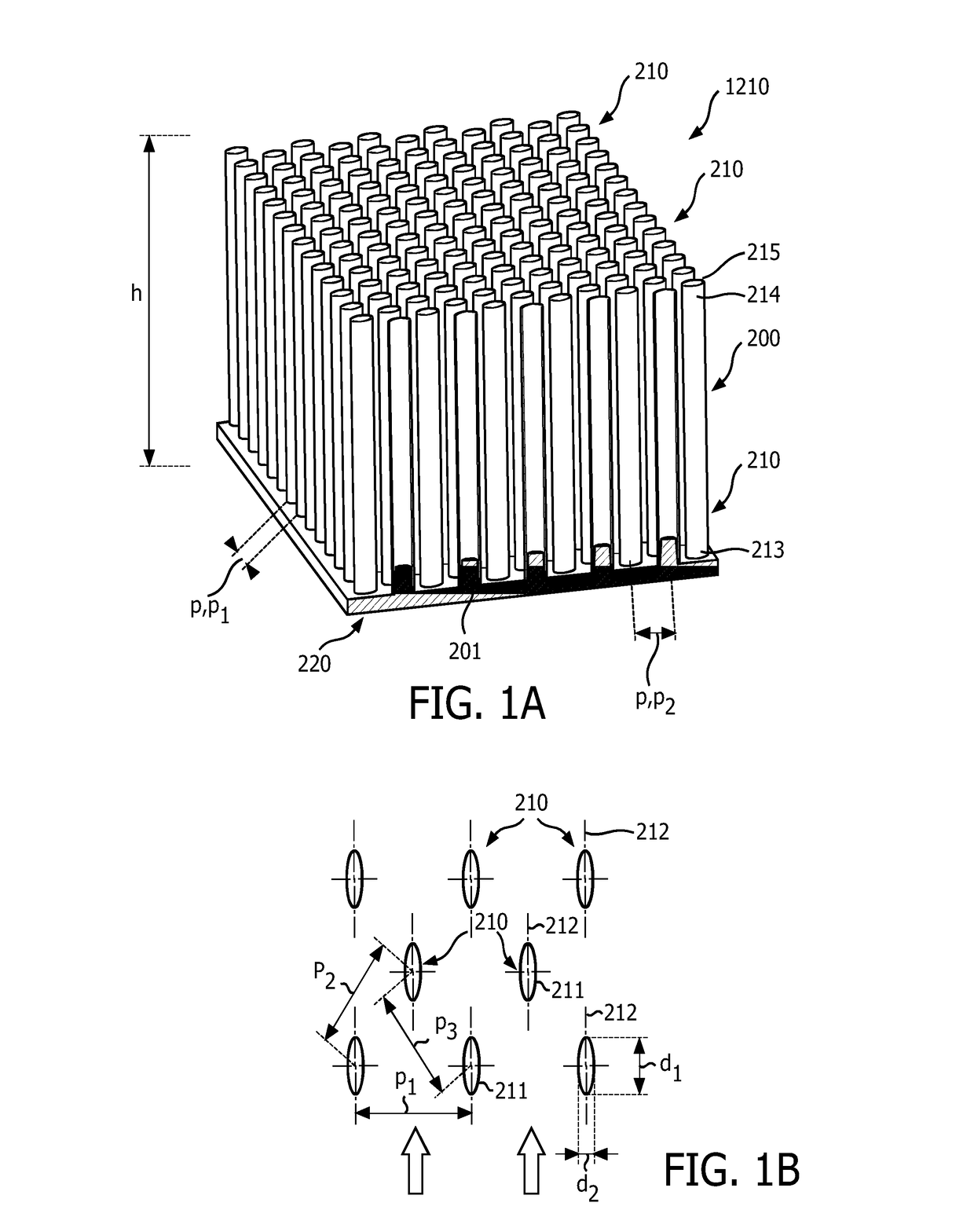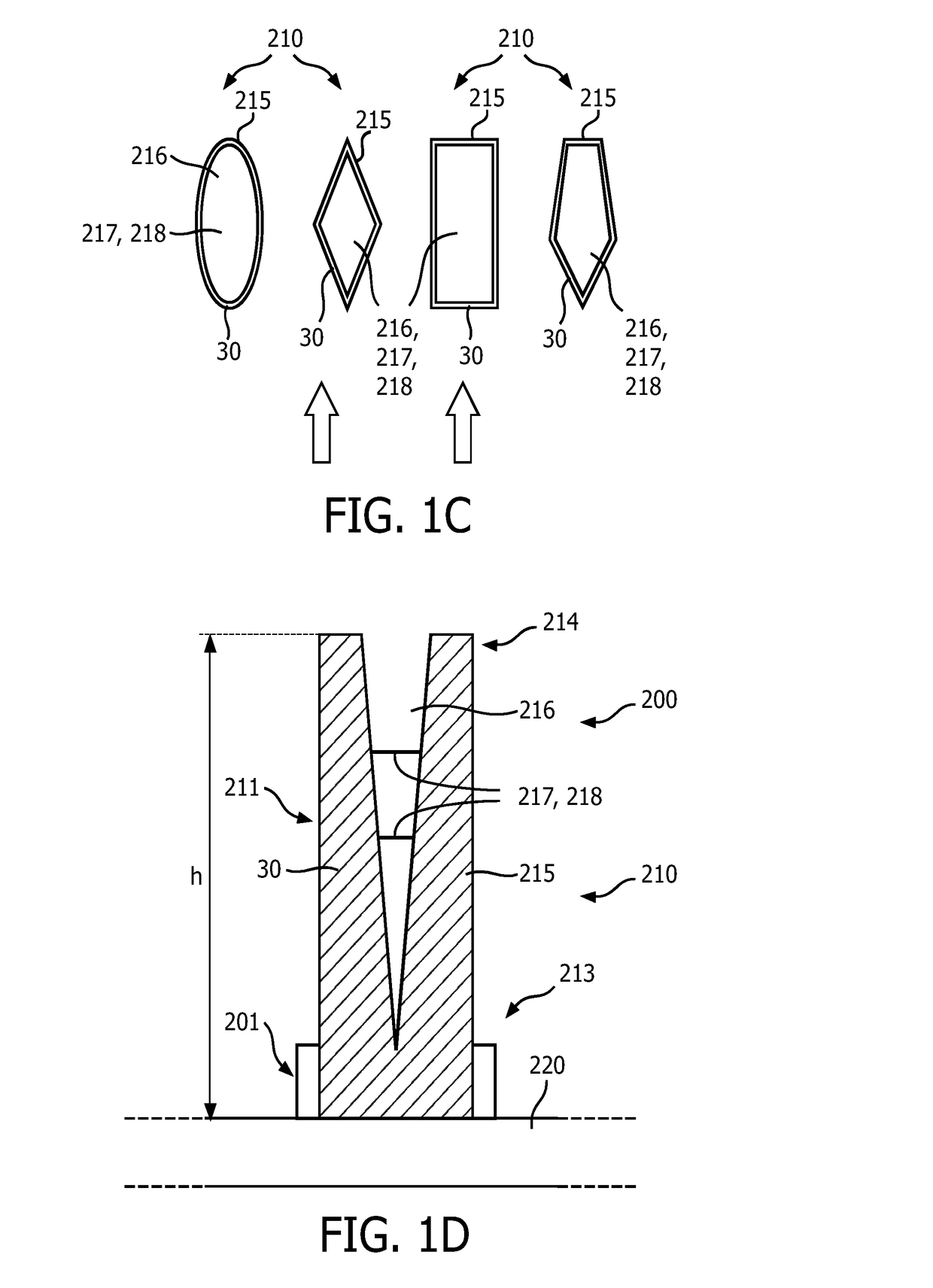Low weight tube fin heat sink
a heat sink and low weight technology, applied in the field of low weight tube fin heat sinks, can solve the problems of large heat sink fin area, difficult to achieve affordable technologies, and need to remove heat, so as to achieve the same heat dissipation properties, improve thermal energy dissipation properties, and reduce weight
- Summary
- Abstract
- Description
- Claims
- Application Information
AI Technical Summary
Benefits of technology
Problems solved by technology
Method used
Image
Examples
Embodiment Construction
[0044]FIG. 1a schematically depicts a heat sink 200 comprising a plurality of pin-shaped fins 210 and a support 220. Both the fins and support may e.g. be of aluminum. The support 220 may especially be a plate-like element. The support may especially have a thickness (or height) in the range of 0.5-50 mm, such as in the range of 2-10 mm. The fins 210 are arranged at one side of the support 220. The other side of the support 220 may be in thermal contact with a functional element (see below).
[0045]Each fin 210 has a fin height h relative to the support 220, such as in the range of 1-100 cm. Further, each fin has a bottom part 213 associated with the support 220 and a top part 214. As is visible for the fins shown in cross-section, the pin-shaped fins 210 are hollow over 100% of their fin height h. Hence, the total height of the heat sink is the thickness or height of the support 220 and the height h of the fins 210.
[0046]Here, a regular array or pattern 1210 is shown. The fins 210 ha...
PUM
 Login to View More
Login to View More Abstract
Description
Claims
Application Information
 Login to View More
Login to View More - R&D
- Intellectual Property
- Life Sciences
- Materials
- Tech Scout
- Unparalleled Data Quality
- Higher Quality Content
- 60% Fewer Hallucinations
Browse by: Latest US Patents, China's latest patents, Technical Efficacy Thesaurus, Application Domain, Technology Topic, Popular Technical Reports.
© 2025 PatSnap. All rights reserved.Legal|Privacy policy|Modern Slavery Act Transparency Statement|Sitemap|About US| Contact US: help@patsnap.com



